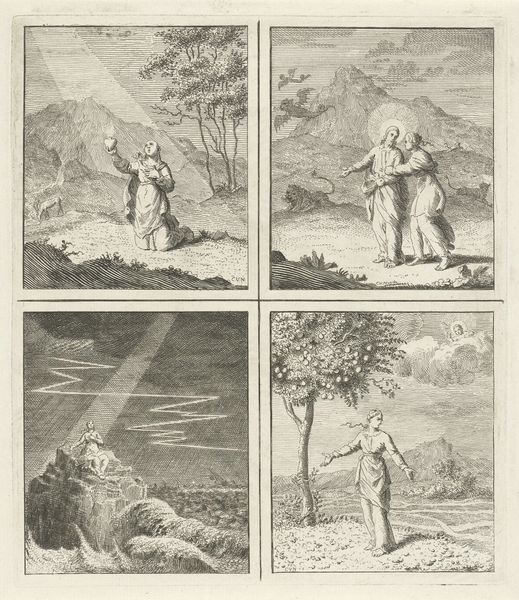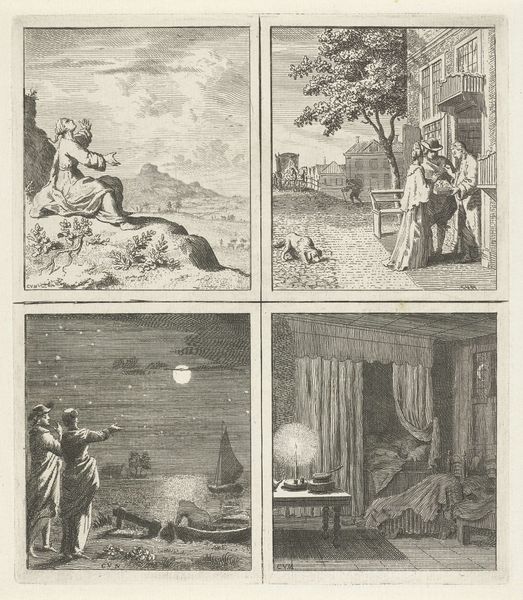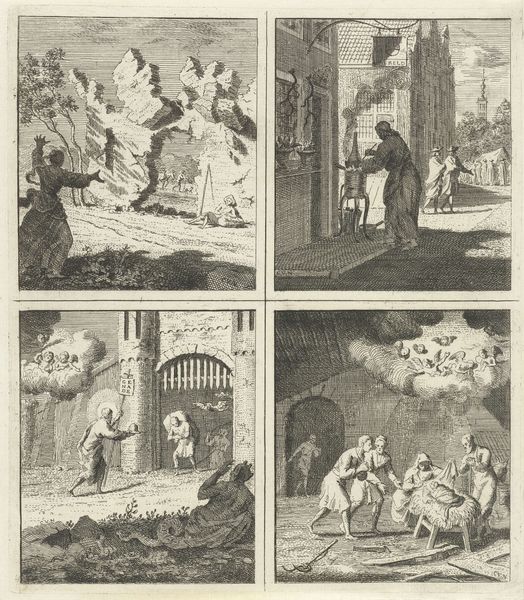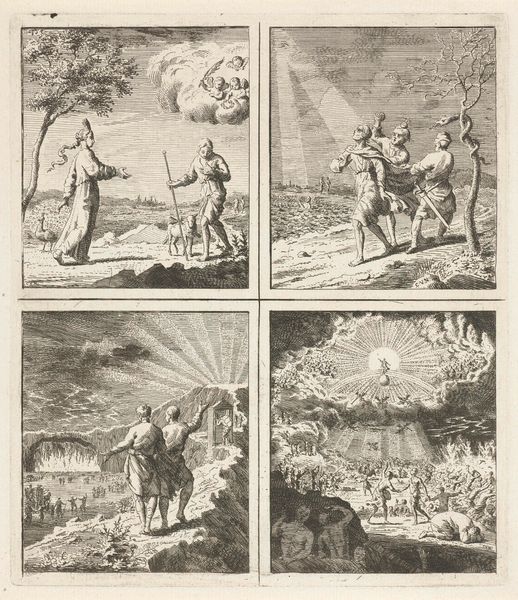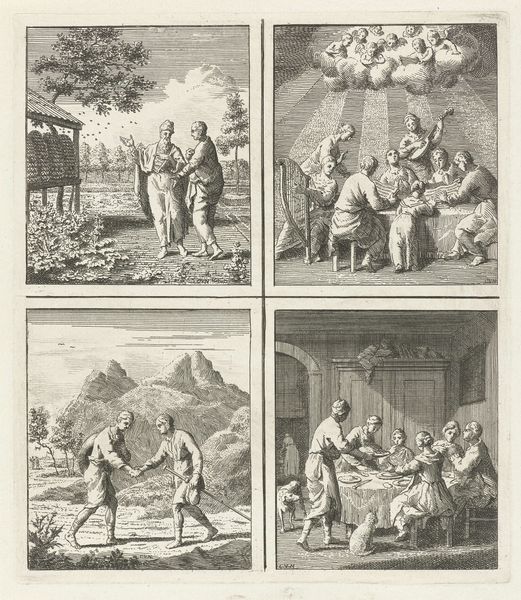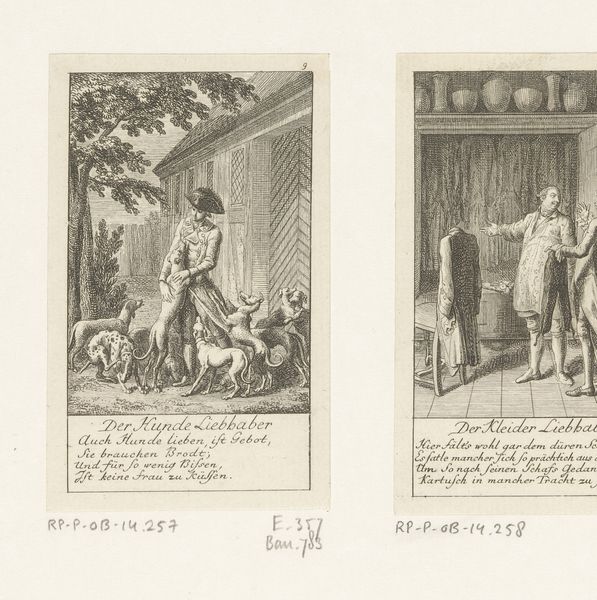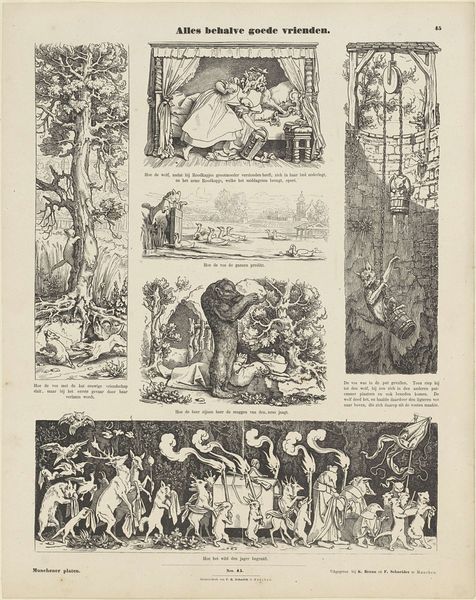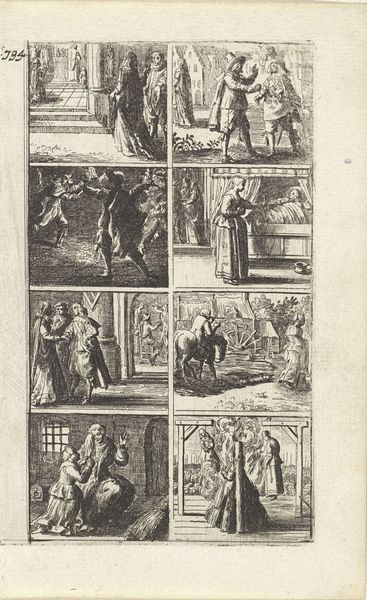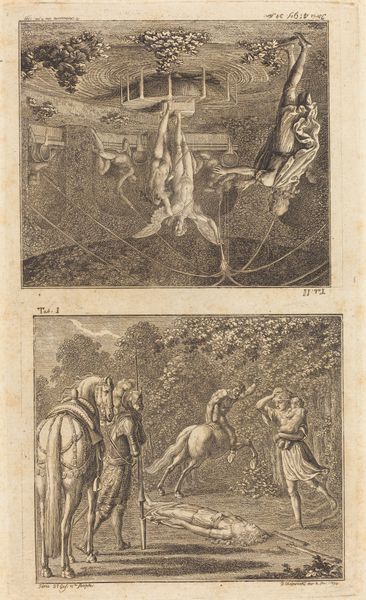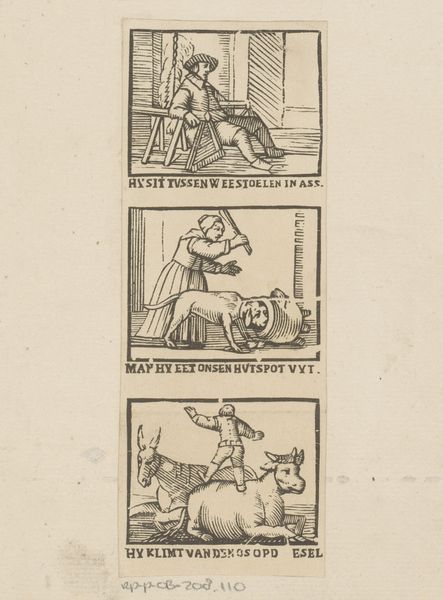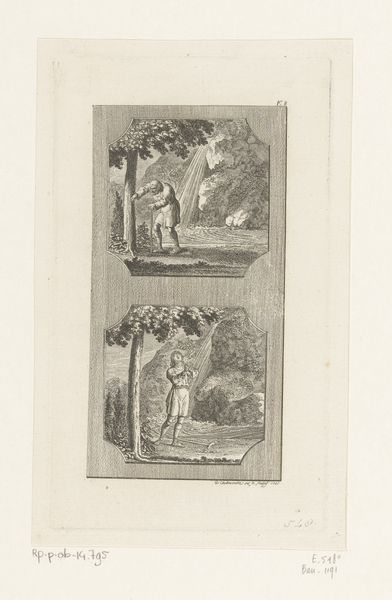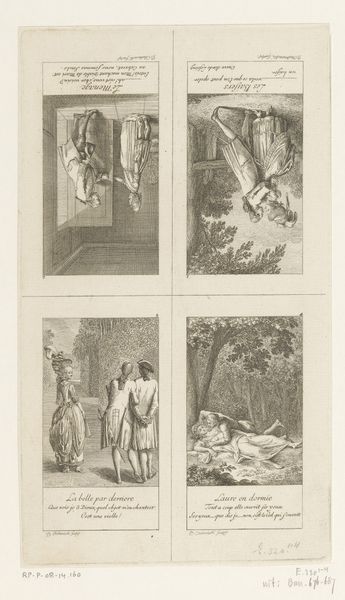
Verliezen van zichzelf / De Dood klopt aan de deur / Skelet en botten / Grijsaard before 1767
0:00
0:00
Dimensions: height 192 mm, width 167 mm
Copyright: Rijks Museum: Open Domain
Cornelis van Noorde created this print, "Verliezen van zichzelf / De Dood klopt aan de deur / Skelet en botten / Grijsaard", during the 18th century in the Netherlands. Through its four panels, the image meditates on the theme of death and the passage of time. This was a popular theme in Dutch art, reflecting the cultural emphasis on mortality and the transience of earthly pleasures. Van Noorde’s image uses visual codes to emphasize the universality of death; the skeleton is shown visiting various members of society. Looking closely, we see that the work responds to the religious and economic anxieties of the time, a period marked by an increasingly urbanized society and the growing influence of the merchant class. The work suggests a moral message but also comments on the social structures of its time by presenting death as an inevitable event in all stages of life, from youth to old age. Art historians examine the iconography of prints like this, considering their place in a broader historical context. Studying such images gives insight into the cultural values of the past.
Comments
No comments
Be the first to comment and join the conversation on the ultimate creative platform.
